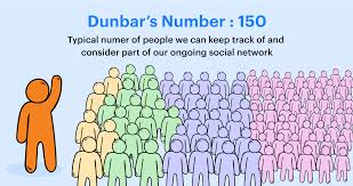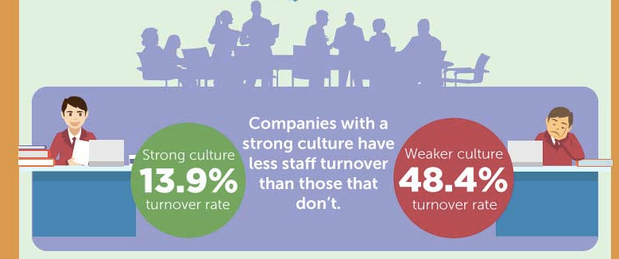TJ Agresti, JD, LLM, CAMFounder and President Archives
February 2021
|
Back to Blog
Communications | 8 Minute Read Corporate Culture Is an Asset Even small improvements in corporate culture can provide significant strategic advantages with measurable effect on the bottom line. Corporate culture encompasses all aspects of your organization’s environment and brand. It’s not just the perks of a breakroom with organic snacks or a ping pong table. It is the aggregate of the founders’ history, management’s influence, customers’ perceptions of brand promise and employees’ work experiences. Corporate culture is, in simplest terms, an imagined order which enables employees to cooperate and forge a better organization and customers to believe their desires align with a brand promise to fulfill them.[1] Corporate culture develops along the same paths that organizations take as they transition from their entrepreneurial stages of development up to a final professionally managed stage when it becomes necessary to consolidate and institutionalize the imagined order of shared beliefs. It is the last step that may seem intangible to many leaders but nevertheless is a real, measurable, and significant asset which must be taken advantage of. Metrics like employee engagement, job satisfaction, and brand perception can have measurable financial impacts on recruiting and retention performance, cross-functional project collaboration efficiencies and consumer brand loyalty. A culture transition is in progress whether management recognizes it or not as a company goes from the loose, free-spirited organization of its early days to a more disciplined one with a well-defined planning process, specific measurable goals, formal role descriptions and performance management systems. Organizations and Corporate Cultures Evolve Together Your company’s culture is transmitted by direct day-to-day contact between all members of the workforce regardless of position. Your first wave of employees came on board when the organization was relatively small and mostly entrepreneurial. According to the research of Eric Flamholtz and Yvonne Randle, encompassing thousands of organizations and their development, the first wave of employees probably came in when the organization had less than $1 million of revenue for manufacturing firms and less than $300,000 for service firms.[2] The imagined order of these core employees affects all subsequent waves as the company expands beyond the capacity of its social systems. Robin Dunbar, the famed British anthropologist, posits that the maximum “magic number” for a cohesive group size is 150 members.[3] In the business world, Dunbar’s number provides an important insight into why an organization’s sense of common purpose may weaken as its employee number grows without a defined culture and the communications systems to distribute, monitor and manage it. It is not your employees’ fault or management’s fault. It is the product of evolutionary psychology that informal socialization no longer functions to maintain corporate culture, by the time an organization reaches a workface level often required to attain $100 million in revenue for manufacturing firms and $33 million for service firms.[4] Larger groups of over 150 members may simply be unable to maintain the relationships necessary to share the binding force of common beliefs, values, interests or a shared sense of purpose. At this point, management must develop a succinctly defined corporate culture with a formal communications system to transmit, monitor, reinforce, and manage it. Where to Start The starting point is a culture audit which allows leadership to empirically assess the current state of its corporate culture, to collate and analyze all the data collected into a written report and then build a set of actionable and measurable strategies to create, improve, monitor and manage its corporate culture. The goal of the culture audit should be to build a culture driven organization that supports the sustainable performance of the business. Phase 1 - Assessment The first phase of a culture audit is the assessment stage. The assessment stage can be a narrowly focused audit with a specific target audience or a consolidated audit encompassing the entire workforce. Generally, some type of hybrid approach is used that begins with the consolidated approach then adds discrete audits of targeted groups or specific risks identified in the overall audit. The assessment stage generally includes a review of internal documents, the company intranet (if one exists), corporate policies and procedures, the company’s public facing web sites, news and media, social media platforms, customer feedback, promotional and marketing material. The object is to examine all the evidence and build a snapshot of current corporate culture as perceived by employees, management, and customers. Specific techniques may include:
Phase 2 - Analysis The next phase is to collate and analyze all the data, observations and information gathered into a written report shared with a cross-functional team assigned to the culture audit project. It is important to stress that culture is not merely a top-down exercise. It is a bi-lateral process that requires a robust communication system between even the newest staff members, the C-suite, and the board of directors if there is one. Management provides aspirational guidance on what they want the corporate culture to be, but the employees define what it is. The object is to affect a desired change and be able to sustain it which requires total buy-in by the workforce, at all levels, of the corporate culture. The initial report should provide a balance of both positive and negative aspects of the current state of the corporate culture organized along themes aligned with your company’s organizational structure. Some commons themes to help organize the information may be:
Phase 3 - Audit Report and Recommendations
Culture Handbook The distillation of the culture audit also provides the content necessary to create a culture handbook. This guiding document will become the living content hub that evolves as your corporate cultures evolves. It is both an internal document that should find a prominent home on the company intranet and an external document that should be integrated into an employee recruiting and retention program as well as external communications channels. Customers should know, just like prospective and current employees, what makes your company special, so they choose to be a part of it. The content of your culture handbook will align closely with the themes used to organize the culture audit. The biggest difference will be the format. The culture audit will be an analytical document focused on objectives and metrics while the culture handbook will be a more proud promotion of your brand focused on creating a desire to belong to it. In a 2016 interview for the Greymatter podcast, Reed Hastings, CEO of Netflix said, “[a culture handbook] is a bill of rights for employees; here is a set of things that we, the company, want and aspire to operate by, and, if we don’t, you can call us out on it and we will either fic the articulation-because it’s too easy to misunderstand-or live up to what we want to. So, in some ways, it’s aspirational. By putting it in writing […] it allows all the people in the company to collaborate on it and suggest improvements.” Change Management Keep in mind, during a corporate culture transition, that some employee groups may have been in place with strong entrenched beliefs from the early stages of the organization. Embedding a new corporate culture and new operating systems is a type of trauma for many employees comfortable in how things currently work. A change management plan that addresses the normal fear associated with change must be a consideration with extra time and effort allocated to avoid resistance and overcome the potential for an exodus of your longest serving and maybe most loyal employees. According to Heather Boushey and Sarah Glynn who analyzed 30 case studies from the 11 most relevant research papers in their 2012 study for the Center for American Progress [5], the average costs to replace an employee are:
Human resource managers grasp the cost of employee turnover. That said, performance management systems usually accompany the corporate culture transition to a professionally managed organization. The transition often creates accountability which may not have existed before. You may find that some employees simply are not as productive or are, in fact, counterproductive to the performance of the organization. Bottom Line After all, that is the bottom line, the performance of your organization that you are responsible for in your leadership capacity. The sustainable strategic advantage that is in your control and that cannot be duplicated is your corporate culture. According to a 2015 article in Harvard Business Review, a culture driven organization achieves significantly higher organizational effectiveness, increased productivity, employee engagement, financial performance, and customer satisfaction. Your culture audit and corporate culture program can boost employee commitment and engagement while fostering collaboration, communication, and teamwork which translates to a positive employee experience, efficiencies in project completion, more customer brand loyalty, improved recruiting and retention and an improved bottom line year after year. You must ask yourself, “What type of leader am I?”
Now is the time to maximize the one strategic advantage you have complete control over. Start with a culture audit then create a culture handbook, allocate the necessary resources to implement, monitor and maintain it, and develop the necessary operational communications systems that allow it to thrive. [1] Yuval Noah Harari, Sapiens-A Brief History of Mankind (New York: harper Perennial, 2015), 114 [2] Eric G. Flamholtz and Yvonne Randle, Growing Pains: Building Sustainably Successful Organizations (New Delhi: Wiley, 2016, 5th Edition), 48 [3] Robin Dunbar, How many Friends Does One Person Need? Dunbar’s Number and Other Evolutionary Quirks (London: Faber & Faber, 2010) [4] Flamholtz and Randle, growing Pains, 48 [5] Heather Boushey and Sarah Jane Glynn, There are Significant Business Costs to Replacing Employees (Washington, D.C., Center For American Progress, 2012) https://www.americanprogress.org/wp-content/uploads/2012/11/CostofTurnover.pdf About T.J. Agresti Mr. Agresti is the Founder and President of Critical Mission Consulting, LLC and a recognized entrepreneurial executive who employs corporate culture driven professional management practices, cross-functional strategic leadership and full stack team execution that deliver on P&L driven KPIs. He founded Critical Mission Consulting to provide organizations go to market corporate communications strategies; corporate culture programs; diversity, equity and inclusion initiatives; employee recruiting and retention programs; company intranets; business development and marketing plans; strategic financial plans; and project management platforms to support the achievement of each company's mission and vision in the delivery of its brand promise. To contact him or learn more about Critical Mission Consulting, LLC visit https://www.criticalmissionconsulting.com/
0 Comments
Read More
|
|
Privacy Policy
Cookies policy Terms of Use Disclaimers © 2013 - 2024 Critical Mission Consulting LLC All Rights reserved |


 RSS Feed
RSS Feed





